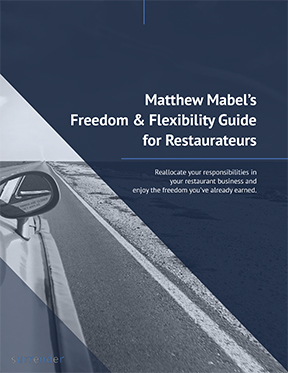
Many of my clients operate more than one brand.
These operators of multi-unit, multi-concept organizations have challenges that never even show up on the radar for single-concept operators.
Still, few yearn for a simpler life. That’s just how the personalities of these owners work.
These multi-concept companies evolve with a high level of creativity and the enjoyment of doing different kinds of deals.
Or they identify as opportunistic and don’t want to be restrained by one brand.
It’s a Good Strategy – Until It Isn’t
Of course, you love all your children. But how many of them do you have time enough to sit down with and make sure they did their homework?
It used to be that chains loaded up on as many brands as they could. Brinker did that with Corner Bakery, Cozymel’s, Eatzi’s, Grady’s American Grill, Kona Ranch Steakhouse, and Romano’s Macaroni Grill. Whoa!
Then Wall Street figured out that focusing on one brand (or maybe two) really made the almighty asset value grow. For Brinker, that meant paring down their brand roster to just Chili’s and Maggiano’s Little Italy (and now It’s Just Wings – a subset of Chili’s).
Recently, however, Wall Street did another 180: Now, multi-concept companies look good to them again.
Why? A lot of this has to do their use of technology. If a publicly traded company massively invests in technology, being able to use that investment across multiple brands (instead of just one) makes more sense.
Think Panera, Einstein’s, and Caribou Coffee; or Dine Brands: Applebee’s and IHOP; or TriArtisan: Friday’s, PF Chang’s, and Hooters (I’m fairly certain they don’t cross-utilize servers at that group).
The Multi-Concept Difference
All my research reveals that multi-concept operators, like the big companies mentioned above, can make some of their technology and systems work across all brands.
However, much of the rest of what they do can’t.
They must learn how:
- To divide their energy between the brands with the most upside potential and the least.
- To stratify multi-unit personnel so each brand receives the attention it needs and in the correct style. The greatest operations director for one brand, for instance, may be the worst for another.
- To build a culture appropriate to each brand. Culture drives guest and employee behavior. When operating brands with very different guests and employees, having the most success means you must vary culture.
Some multi-concept operators are locked in and will always have diverse brands. Others are more fluid and will divest some brands and focus on others.
The most successful understand that, with multiple brands, one size does not fit all in the way you operate, focus, supervise, and direct behavior.
Over to you, multi-concept operators. How do you differentiate in these categories in your organization to maximize your success?

